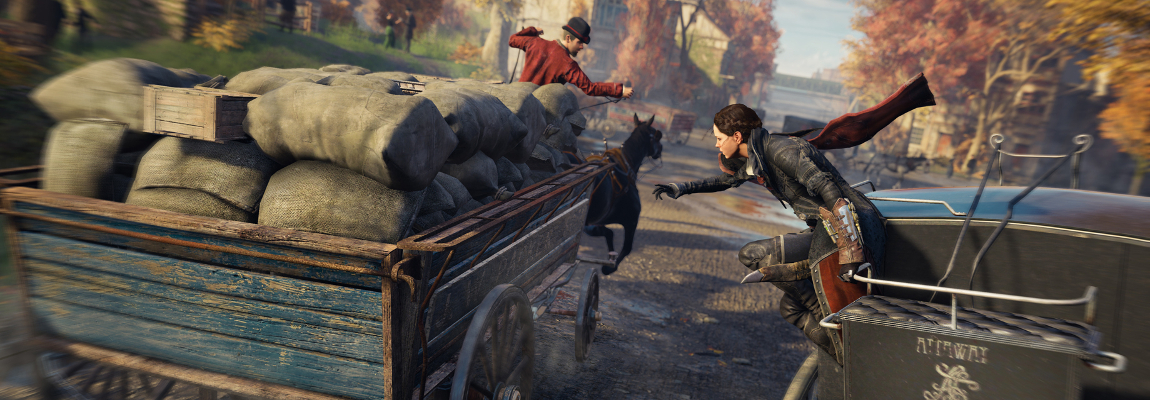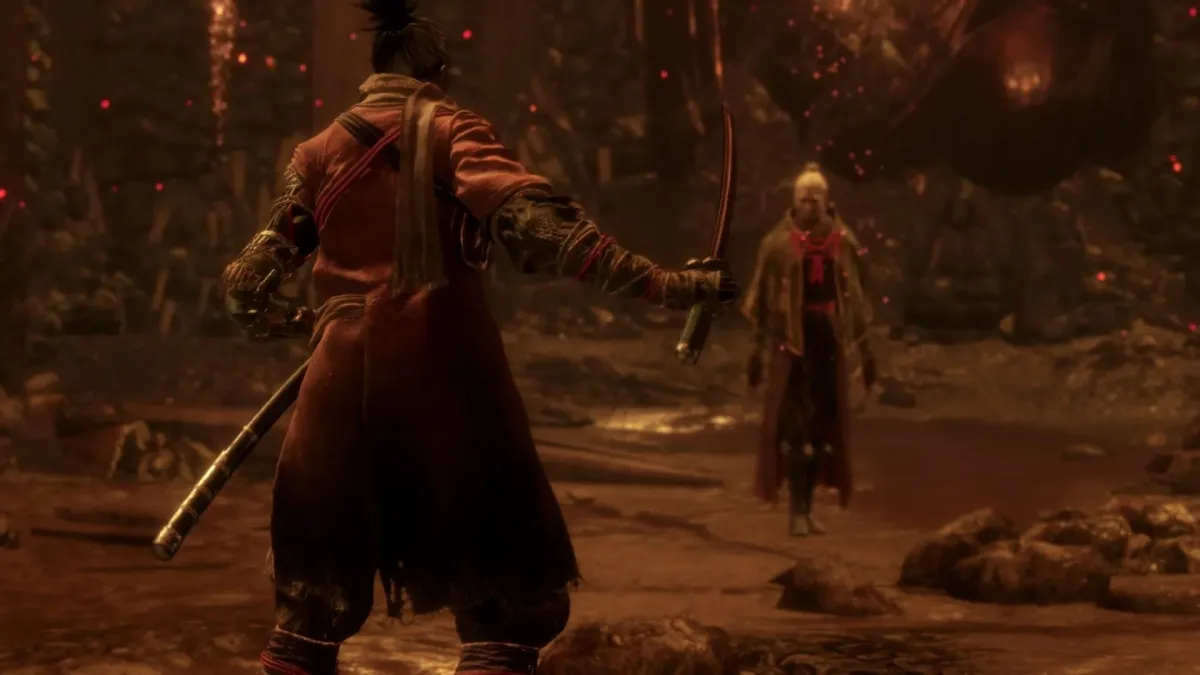City of London, City of London
With October nearly here, it’s about that time for Ubisoft to release another entry in its annual time-traveling trek through history. While Assassin’s Creed has had highs and lows, no one can deny it’s one of the few series shining a light on settings that often go unnoticed in games, and turning them into fun playgrounds where you can assassinate history’s vilest foes, right wrongs, and bare witness to important moments from civilization’s past.
In the upcoming Assassin’s Creed Syndicate, players will travel to Victorian-era London and explore mankind’s transition into the modern era. While it’s very much about looking forward, Ubisoft picked an interesting time for self-examination and has been looking at the franchise’s past during the making of this title. The developers hope to get back to the basics of what Assassin’s Creed has been all about for this jaunt into 1800s England.
During a hands-on preview event in London, Ubisoft invited us out for a tour of the city where Syndicate is set and a chance to play the game at length. I got to see just what the developers have in mind for the new adventure from the time-warped franchise, and just what they wish to achieve.

Assassin’s Creed Syndicate (PC, PS4 [previewed], Xbox One)
Developer: Ubisoft Quebec
Publisher: Ubisoft
Release Date: October 23, 2015 (PS4, Xbox One) / Q4 2015 (PC)
Set nearly eighty years after the events of Assassin’s Creed Unity, Syndicate thrusts players into the gritty and bustling city of London during the Industrial Revolution. With the Assassin Order struggling to rebuild, sibling assassins Jacob and Evie Fyre come to Victorian-era London during a relatively modest mission and find it under heavy Templar control.
Witnessing the extent of the corruption in the heart of the Western Empire spearheaded by powerful industrialist and Templar operative Crawford Starrick, the siblings disregard the demands from their Order to abandon the city and take matters into their own hands to dismantle the Templar power structure. Using their Assassin abilities and gadgets, along with their keen eyes for scouting potential alliances with the locals, the Fryes will have to unite the criminal underworld of London in order to overthrow a common enemy, who may be in possession of another Piece of Eden.
As one of the most-requested settings for an AC title, the developers at Ubisoft were keen on bringing the series to the Victorian era. London during 1868 was a period of equally great innovation and social unrest. The Industrial Revolution gave way to mass production and advanced technologies, but it came at the cost of humane working conditions, child labor, and poor quality of life for the working class. With factories peppering the city of London and smoke blotting out the sky, urban living was not what it was cracked up to be — there was a lot of misery for those on the bottom of the social structure. This makes for an evocative setting for Assassin’s Creed, and adds a greater connection with the city.
While it would sound a bit cheesy to say that the city is a character itself, it does feel that way. I was impressed with not only how accurate the city looked, but also how much life exists within the game. There are several districts to travel to including Southwark, Westminster, Lambeth, Whitechapel, and the City of London (metropolitan area). Travel can be done by train, fast travel via landmarks, or even using carriages, marking the first time Assassin’s Creed has an actual traffic and vehicle system to work with while in town.

As the first AC title featuring dual protagonists in the same era, Syndicate does a lot to switch things up for players. Both characters serve as the focus for the general narrative. At any time in the menu, you’ll be able to switch between the two while out in the open world, and each of them have unique content to tackle. Essentially two sides of the same coin, the Frye twins have varying approaches and mindsets when taking on obstacles but still seek the same result.
With Jacob being the more hard-headed, brutish assassin who seems to relish his time getting into brawls and sharing a pint with commoners in the pubs, many of his ventures tend to have a more over-the-top flair to them. Evie, on the other hand, is clearly the more rational and logical twin, focusing on hatching clever plots to accomplish her long-term goals. In the end, a sledgehammer is sometimes more effective than a scalpel, and vice-versa — so the twins will have to rely on each other to successfully overthrow the Templars.
I rather enjoyed the dynamic between the Fryes. It’s a change of pace for the series, and it’s refreshing to have a female assassin put in the spotlight. Jacob’s brash and devil-may-care attitude works well with Evie’s stoic and uncompromising demeanor, which often times conflicts with her brother’s spontaneous behavior. Essentially, it’s a buddy-assassin plot, and it works quite well. These characters are invested, but still manage to find time to make jokes at the expense of their sibling. Given how expansive London is — more than three times the size of Paris from Assassin’s Creed Unity — the twins will have a lot of ground to cover in the open world. Eventually, they’ll gain access to a personal train which serves as a mobile command center for their operation. As the train makes its rounds, they’ll be able plan their next move and ride the railway to missions.
During their exploits in London, the Fryes will come across many important figures who have their own stake in the city, and they’ll come to rely on the two assassins for assistance. From Alexander Graham Bell — who builds a rope-launcher that allows the twins to scale rooftops and make zip-lines — to Charles Dawrin, Charles Dickens, and even the infamous Jack the Ripper; the Assassins will come across many allies and foes on the streets, and they’ve all got their own ambitions in mind. But the twins won’t be able to succeed on their own. With the many gangs and factions around London made up of citizens frustrated with feeling powerless, Jacob and Evie will have to win them over in order loosen the tight grip the Templars have over the city. As you retake areas of London from the Templars and gangs, key leaders will make themselves available and offer assistance.

In Sequence 3 of the campaign, Evie forms an alliance with Clara O’Dea, the leader of a gang of children who’ve been used by the corrupt factory supervisors and seek their own way of life away from controlling adults. Each key figure within the different districts of London has a relationship with the Fryes, and doing missions and side-quests for them will strengthen their bond and unlock new gear and valuables. Over time, cash made by your network of gangs will be kicked back to the Fryes. It’s a clever way to work key characters into the core progression. In previous titles, most of the advancement was done in menus and general side-missions, so incorporating character growth along with the related content makes the progression feel as though you’re having a deeper impact.
As always, the assassins will have several areas of the game world to conquer, and completing side-objectives and story missions are the best way to do so. In Syndicate, however, it feels as though there’s a much greater level of variety for the side-missions. With the lack of multiplayer and co-op modes, this gave the developers resources to flesh out the world with side-events and points of interests to explore. For instance, instead of going around and tailing contacts, Jacob can compete in local fight clubs to strengthen bonds with allies. As you accomplish missions and side-quests, you’ll gain experience to level up and acquire skill points to spend in the universal skill tree. Skills range from buffing melee attacks, eagle vision effective, upgrades to the arsenal, lockpicking, store discounts, and boosts to the economy.
When you acquire more resources and control more of London, the assassins can spend their cash on new items, armor, and weapons. Given the era, the Fryes will have to be far more practical in their approach to carrying out their missions and assassinations. With great swords, hammers, and crossbows now considered antiqued in mid-1800s London, and many of which would get people arrested for possession, concealed weapons were a major part of self-defense in urban life. Between the standard cane sword (a short sword hidden in the shaft of a cane), daggers, brass knuckles, pistols and revolvers, bombs, poison, and the tried-and-true hidden blade, the concealed weapons add personality to Syndicate and feature an added level of customization, which also speaks to the increasingly modernized era.

As covered in my last article, the combat system has been overhauled. It’s now far more active. While Unity experimented with some new ideas, Syndicate advances things quite a bit. Given how easily players could abuse certain skills and rewards during combat, the developers felt it was time to try and switch things up. Here, battles prompt players to go more on the offensive, as enemies now only attack when they seen an opening and guard more frequently. Players will have to use stuns and guard-breaks to open up these defenses, all the while using parries and their side-arms (knives, revolvers, bombs) to manage multiple foes. The combat felt much more challenging this time around, and I was surprised at how tense things got. Heavier enemies in particular take a lot longer to bring down.
Unfortunately, I was concerned with the overall technical performance of the game. There were several instances of texture and environmental objects fading in, along with NPC characters popping into view, and some slight frame rate dips throughout my preview session. While this title is in a much better state than Unity was last year at launch, I do hope that the devs can iron out the issues. Given how rich the setting is — they nailed the atmosphere and tone of the era — it would be a shame if these technical hiccups persist in the final release.
Graphical worries notwithstanding, I was largely pleased with Assassin’s Creed Syndicate. This is very much a dream setting for fans, myself included, and to see it all realized so vividly was great. From the bustling streets filled with carriages, to the back alleys full of criminals and roughnecks looking for their next target, the atmosphere in Victorian-era London is the strongest an AC game has had in a long time. I’m looking forward to my trip back to the foggy city, but I do hope they’ll fix the kinks. This is one era that deserves the best the developers have got.













Published: Sep 24, 2015 4:00 PM UTC